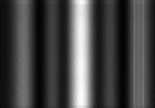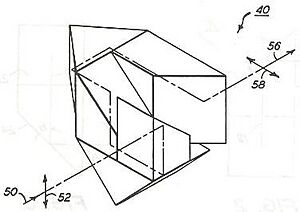F. J. Duarte facts for kids
Quick facts for kids
F. J. Duarte
|
|
|---|---|

F. J. Duarte at a meeting of the Optical Society in 2006
|
|
| Born | c. 1954 |
| Nationality | American Chilean |
| Alma mater | Macquarie University |
| Known for | Tunable lasers Narrow-linewidth dye lasers Multiple-prism dispersion theory N-slit interferometer N-slit interferometric equation |
| Awards | Paul F. Forman Engineering Excellence Award (1995) David Richardson Medal (2016) |
| Scientific career | |
| Fields | Physics Optics |
| Institutions | Macquarie University University of New South Wales University of Alabama Eastman Kodak Company State University of New York University of New Mexico Interferometric Optics |
| Doctoral advisor | J. A. Piper |
| Other academic advisors | J. C. Ward R. E. Aitchison |
Francisco Javier "Frank" Duarte (born around 1954) is a laser physicist and a writer. He has written and edited several books about tunable lasers.
A laser physicist is a scientist who studies and works with lasers. Lasers are special devices that produce very focused beams of light. Frank Duarte's work on how light behaves (called physical optics) and how to make new lasers has earned him several awards. One of these was an Engineering Excellence Award in 1995. He received it for inventing the N-slit laser interferometer, which is a tool used to study light.
What Frank Duarte Researched
Making Lasers Work Better
Frank Duarte and his colleague, J. A. Piper, created new ways to make lasers. They used special setups called multiple-prism near-grazing-incidence grating cavities. These setups helped them make very focused and adjustable lasers.
They first used these lasers with copper vapor lasers. Later, they used similar designs for powerful CO2 lasers and solid-state lasers that could be tuned to different colors.
Understanding How Light Spreads
Duarte also came up with ideas about how light spreads out inside lasers. This is called multiple-prism dispersion theory. It helps make lasers that produce very narrow, focused beams of light. He also used this theory to make laser pulses shorter and more powerful. His books explain these ideas in detail.
Lasers for Separating Atoms
Duarte's special tunable lasers have been used by scientists to separate different types of uranium atoms. This process is called atomic vapor laser isotope separation (AVLIS). It's important for making nuclear fuel. His work was supported by the Australian Atomic Energy Commission.
He even suggested that Australia should build an AVLIS facility. Later, in 2002, he helped with research that used tunable diode lasers to separate lithium atoms.
Lasers Made from Solid Materials
From the mid-1980s to the early 1990s, Duarte worked with scientists from the US Army. They developed strong, "ruggedized" lasers that could be tuned to different colors in the visible light range. These lasers were the first of their kind to be tested in rough outdoor conditions.
This research led to experiments with new materials for lasers, like polymers. In 1994, Duarte announced the first tunable solid-state dye lasers. These lasers were so precise that their light beams were limited only by the basic rules of physics.
New Organic Materials for Lasers
Working with R. O. James, Duarte explored new materials made from organic and inorganic substances. They discovered materials that combine polymers with tiny nanoparticles. These materials could produce tunable laser beams that were very focused and spread out very little.
In 2005, Duarte and his team were the first to show that light could be produced in a specific direction from an electrically powered organic semiconductor. These experiments used a special setup with an OLED inside.
Duarte's work in this area started with showing how to make narrow laser beams using special dyes called coumarin-tetramethyl. These dyes are very good at changing light into laser beams and can be tuned to many different green colors.
Studying Light and Quantum Physics
In the late 1980s, Duarte invented the digital N-slit laser interferometer. This tool is used for imaging and looking at very small things (microscopy). He also used ideas from Dirac’s notation (a way to describe quantum physics) to explain how this interferometer works. A cool part of this invention was using very wide, flat laser beams to light up samples.
This research also led to a general equation for N-slit interferometers. This equation helps explain common light behaviors like interference (when waves combine), diffraction (when waves bend around objects), refraction (when waves bend as they pass through materials), and reflection (when waves bounce off surfaces). He also figured out an equation for how wide a laser's light beam is, using quantum physics ideas.
Later, very large N-slit laser interferometers were developed. These can create and send special "interferometric characters" for secure communication through open air. "Interferometric characters" are like secret codes made from light patterns. These experiments showed that it's possible to "softly" intercept these light patterns without destroying them.
A useful discovery from this research, especially for airplanes, was that N-slit laser interferometers are very good at detecting clear air turbulence. This is bumpy air that pilots can't see.
Duarte explains quantum optics in his book Quantum Optics for Engineers. In this book, he describes how two particles can be linked together, even when far apart. He calls this the Pryce-Ward probability amplitude.
Frank Duarte's Career Journey
Time at Macquarie University
At Macquarie University in Australia, Duarte studied quantum physics with John Clive Ward and semiconductor physics with Ronald Ernest Aitchison. His PhD research focused on laser physics, and his supervisor was James A. Piper.
He also played a role in university changes. He started and led the Macquarie science reform movement, which changed how science degrees were structured at the university. Many scientists supported this, including physicists R. E. Aitchison, R. E. B. Makinson, A. W. Pryor, and J. C. Ward.
In 1980, Duarte was chosen to represent Macquarie University in the Australian Union of Students. He was briefly removed from this role, then put back in, for a playful act of "running over the tables."
After finishing his PhD, Duarte continued his research at the University of New South Wales and then back at Macquarie University.
Moving to America
In 1983, Duarte moved to the United States to become a physics professor at the University of Alabama. In 1985, he joined the Imaging Research Laboratories at the Eastman Kodak Company, where he worked until 2006. While at Kodak, he chaired several "Lasers" conferences.
Duarte has also worked closely with the US Army Missile Command and the US Army Aviation and Missile Command. There, he participated in research on directed energy (like laser weapons) with R. W. Conrad and T. S. Taylor.
He became a Fellow of the Australian Institute of Physics in 1987. In 1993, he was made a Fellow of the Optical Society of America.
In 1995, he received the Engineering Excellence Award for inventing a special laser tool to check transparent surfaces, like photographic film. In 2016, the Optical Society gave him the David Richardson Medal. This award recognized his important work on laser optics and making laser pulses shorter.
Personal Life
Duarte was born in Santiago, Chile. As a teenager, he moved to Sydney, Australia. He lived in Strathfield and then in a small town called Cowan. In the United States, he lived for a short time in Tuscaloosa, Alabama, before moving to Western New York.
Books He Has Written
- Dye Laser Principles (1990)
- Tunable Laser Optics, 2nd Ed. (2015)
- Tunable Laser Applications, 3rd Ed (1996, 2009, 2016)
- Fundamentals of Quantum Entanglement (2019)
- Quantum Entanglement Engineering and Applications (2021)
See also
 In Spanish: Francisco Duarte para niños
In Spanish: Francisco Duarte para niños
- Heat equation
- Laser space communications
- Multiple-prism beam expanders
- Organic laser
- Polarization rotator



